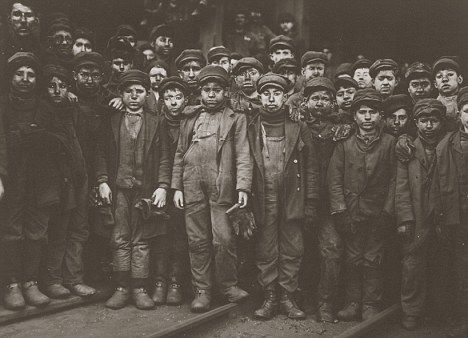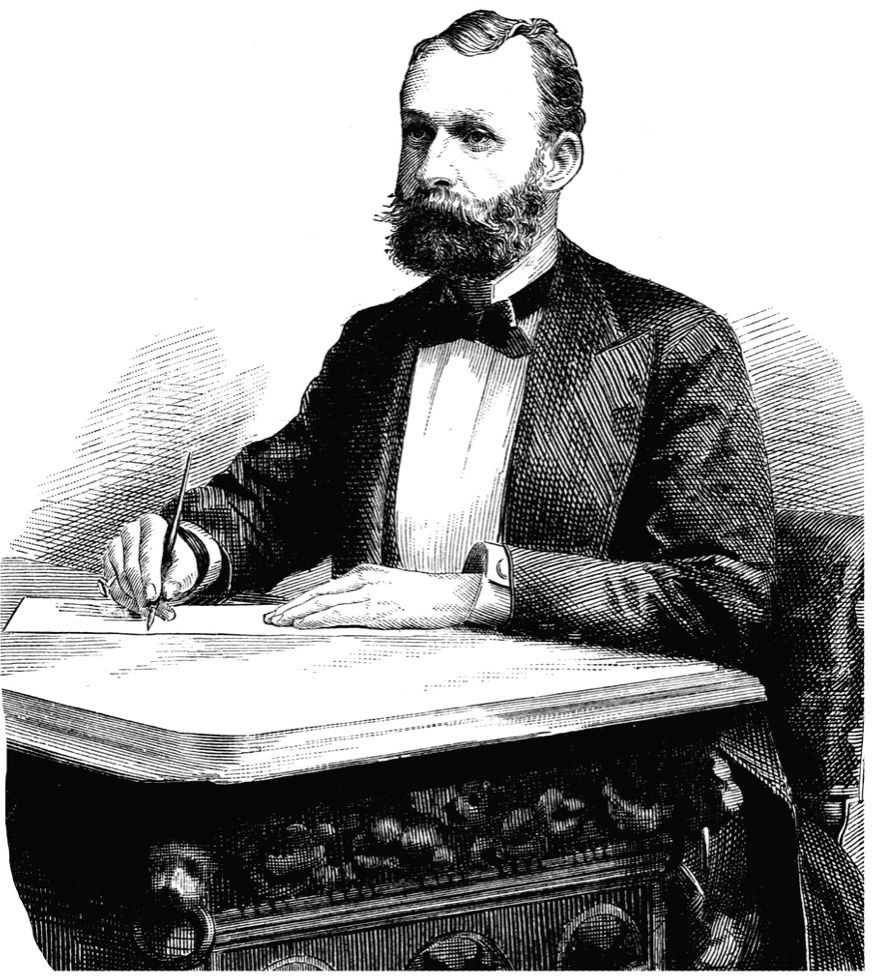This post was originally published in 2012.
On the eve of Christmas’s reemergence in England,Charles Dickens and Washington Irving began a correspondence. It’s no secret, especially at this time of year, that Dickens was the father of Victorian Christmas. English folk had all but forgotten the festivities once surrounding the advent season, thanks to a superstition-wary protestant reign. By means of one well-timed Christmas story – A Christmas Carol – the upper classes were reminded what “keeping Christmas” meant, and were ready to dance quadrilles, deck halls, sing carols, and wassail to their stomachs’ content in the name of the holiday. They were also reminded of their country’s less fortunate, the Tiny Tims and workhouse families that remained hard up and left out, particularly in this time of heightened merriment.
Over in America some thirty years earlier, Washington Irving had done much to revive Christmas sentiment, as well, with his sketches of traditional English celebrations and a reimagined St. Nicholas. Dickens later admitted he drew inspiration for his own festive scenes from Irving’s descriptions. And so when, in 1842, Irving wrote Dickens to express his admiration, Dickens responded immediately, overjoyed to receive acclaim from the man who had authored the satirical Knickerbocker’s History of New York, which Dickens had “worn to death in [his] pocket.” It was only one year before Dickens would publish A Christmas Carol. These Victorian-era Fathers of Christmas, one British, one American, shared an appreciation of humorous satire, of keen social observation, and of England – particularly English Christmas tradition. Also, Charles Dickens and Washington Irving both had a thing for sending people up chimneys.
Dickens was against the practice, actually. He hated the tight climbing work that ruined – and often ended – the already miserable lives of London’s poorest child: the iconic Victorian chimney sweep. He knew about the physical dangers of bodies in small spaces, the carcinogenic effects of breathing soot, the after-hours life that usually involved no sort of family. And so the dark structures loom as a backdrop to many of his stories’ gloomier moments, grim monuments foreboding the death knell of many a hapless orphan. His more familiar characters like Oliver Twist barely escape such a fate. Alternately, the blazing chimney hearth shines in Dickens’s tales as a symbol of the warm potentiality of home. Dickens hoped for betterment in his economically fractured and morally broken city, and he put most of his eggs in the basket of home and family. In stories like the Christmas tale The Cricket on the Hearth, a bright fireside illuminates the family’s – and the reader’s – way.
Dickens himself never made a workplace of the chimney, but he was no stranger to child labor. The tale is familiar: his father found himself in debtor’s prison and a young Dickens found himself affixing labels to boot-blacking pots. Despite his early education, sharp mind, and vivid imagination, he was, for a time, a working boy, rubbing up against the lower classes. He never forgot it. In his young adult years, as his first fiction stories were just taking shape, Dickens served as a parliamentary journalist, actively reporting on proposed reform that had direct bearing on the suffering poor. And so the plight of the poor and the government’s response – or lack thereof – bled into his fiction. In 1843, at the age of 31, Dickens’s tendency toward keen observation of the human condition intersected with all he had seen and heard, andleft him with his most popular story to tell. Ebenezer Scrooge and the three Christmas Spirits formed themselves in his imagination, and he jumped on the idea like Santa to his sleigh. [1]
A mere three and a half decades before Dickens penned the landmark holiday tale, Washington Irving sent a different type of figure down a chimney for the first time: St. Nicholas. The “new” St. Nicholas Irving described in his 1809 Knickerbocker was neither the dignified bishop of Dutch wooden shoe-filling lore, nor the fat man in red we Americans now know best, popping a Coke top with a twinkle in his jolly, commercialized eye. There’s a rendering of St. Nick in Smithsonian Magazine’s December Art Museum feature, as interpreted by artist Robert Walter Weir. Irving’s version, like Weir’s painting, imagines a different type of Christmas spirit, darker and less trustworthy than the traditional Father Christmas, for all his glorious gift dispensing. As the article points out, it is a “mischievous St. Nick” about to disappear back up the chimney with his bag of toys, his finger to his nose, and, possibly, “the family silver.” It isn’t actually certain that Irving’s version descends and ascends chimneys in a like manner, but he certainly lights on rooftops and drops “magnificent presents down them [2]” throughout the Christmas season (which is an odd and rather creepy practice, if you pause to think about it). Here, in that very Knickerbocker’s History of New York that Dickens so loved, is a Santa who steals in like a thief reminiscent of those blackened London chimney boys. When it comes to the Irving’s jolly Christmas icon, there’s some strange, if unsettling, charm in the thought. In the matter of Dickens’s child sweeps, the idea is outright troubling.
Which may be why that particular purveyor of Christmas cheer – Dutch, impish, Coca-Cola-imbibing, or otherwise – doesn’t figure in Dickens’s versions of Christmas, though they are full of fireplaces and chimneys. Dickens knew what a nasty place, both literally and figuratively, the chimney was. He easily passed many a chimney sweep on the London streets, possibly as young as four years old – weary, sooted boys earning a dangerous, miserable, and likely short living, and reaping the contempt of London’s more civilized citizens. The wealthy of Victorian London looked upon the chimney sweeps and saw villains in the making. They depended on those blackened boys for household cleanliness and warmth and, above all, safety, but wouldn’t trust them farther than they could throw their stockings.
You could argue Dickens’s Ghost of Christmas Present bears some resemblance to the older, original Dutch Father Christmas, surrounded by gifts and food and imbued with a deeper concern for the important things in life – compassion and generosity, to start. Scrooge even discovers the “jolly Giant” before a flaming hearth in his home, suggestive of this invader’s good intentions, but it is fairly certain that this particular spirit never descended or ascended a chimney with a bag of presents to pay his Advent visits. He is a different sort of Christmas spirit. He is more interested in morality than in stocking filling. And it’s safe to assume he cares more about the welfare of chimney sweeps than about being Jolly ol’ Saint Nick. As the ghost preceding him declared, he is in Ebenezer’s house for the wretched man’s reclamation.
Not that cultural reclamation wasn’t an interest of Irving’s, too, especially by means of political satire. Nor did he leave chimney sweeps or their destitute like entirely out of his own tales. But the young sweeps Irving observed during his England travels are rendered as romantically as his Christmas-decked Bracebridge Hall, charming sidenotes to city life. Dickens, on the other hand, made his home in the same city as these destitute boys. He saw them out far too early and too late on the unfriendly city streets. There were no cheery-faced singing and scampering Dick Van Dykes in the bunch. Admittedly, Dickens could sometimes use the chimney sweep to comic effect. He also made use of the sweep’s perceived villainous side, as in Oliver Twist’s sweepmaster Gamfield, who represented the dangers into which a young boy without family or support might fall, circumstances that struck at the heart of Dickens’s concern for his city.Who knows?Perhaps Irving’s mildly disturbing St. Nicholas indicated Irving knew Christmas was not all full stomachs and bright, scrubbed faces. Either way, Dickens took the influence of Irving’s earlier, romanticized depictions of English Christmastide and did as he always does: he added in the urban neediness of the London poor, and also the pervasive neediness of the human spirit, whatever the financial circumstances.
There is no Santa Claus herein. There are only the chimneys themselves, bright symbols of the cheery, loving home and dark images the deepest filth the city – or the human soul – can scratch up. It might be said that Dickens’s fiction – holiday and otherwise – plumbs the blackened, sooty depths of human depravity to ultimately offer hope in visions bright as a blazing hearth.
A different type of Christmas spirit, indeed.
[1] In the new biography Charles Dickens: A Life (Penguin Press 2011), Claire Tomalin details this moment (p.148-9), as well as the many circumstances that developed Dickens’s deep concern for the lower classes.
[2] Irving, Washington. Knickerbocker’s History of New York, Complete. Kindle edition.




